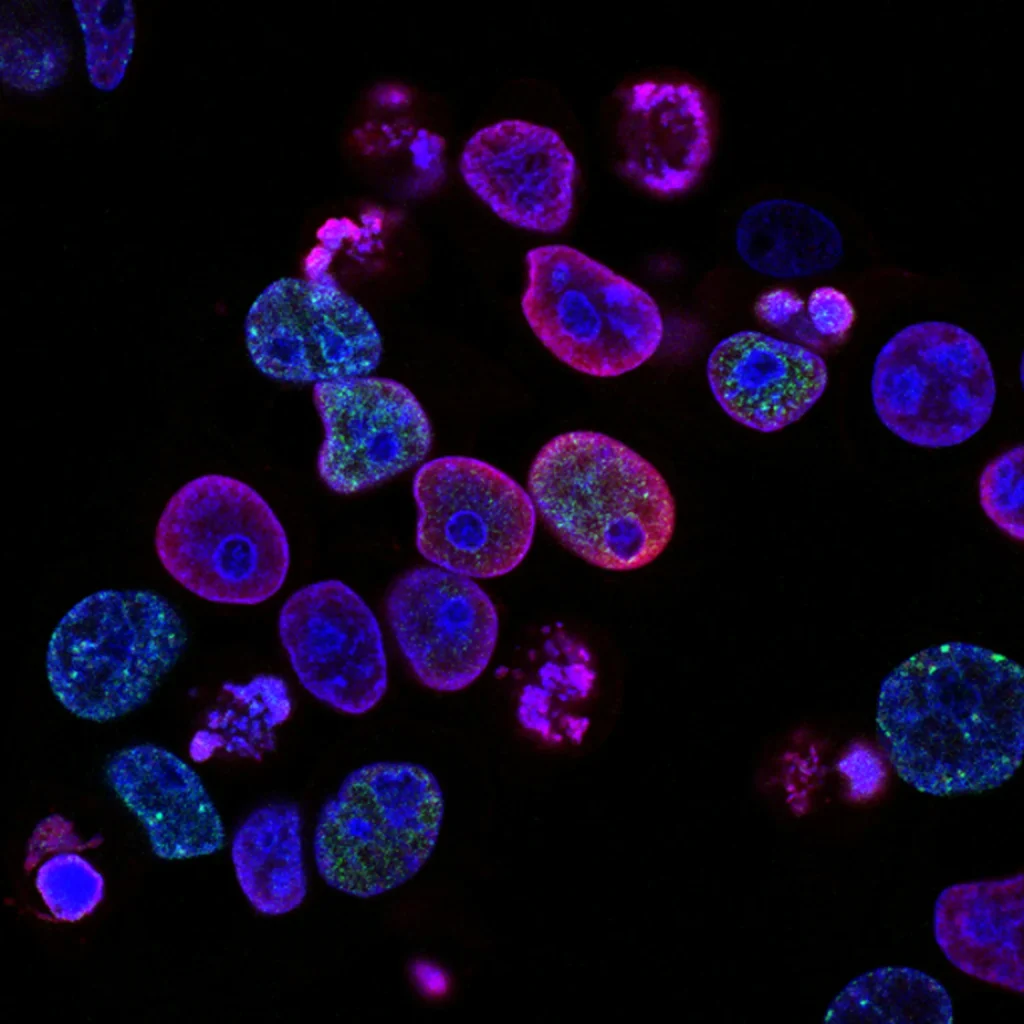Small Fiber Neuropathy: Symptoms, Causes, and Treatment

- What Is Small Fiber Neuropathy?
- Understanding the Basics of Neuropathy
- Small Fiber Neuropathy Symptoms
- Small Fiber Neuropathy Causes and Risk Factors
- Diagnosing Small Fiber Neuropathy
- Small Fiber Neuropathy Treatment Options
- Lifestyle Changes to Manage Small Fiber Neuropathy
- Small Fiber Neuropathy vs Large Fiber Neuropathy: What’s the Difference?
- Coping with Small Fiber Neuropathy: Emotional and Mental Health Support
- Prevention and Risk Reduction
- Alternative Therapies and Complementary Approaches
- Small Fiber Neuropathy Life Expectancy and Prognosis
- Small Fiber Neuropathy Research and Advancements
- Support and Resources
- Conclusion
- Frequently Asked Questions (FAQs)
What Is Small Fiber Neuropathy?
This post may contain affiliate links, meaning I may earn a commission if you make a purchase, at no extra cost to you. I only recommend products I trust. Thank you for your support.
Small fiber neuropathy is a condition that affects the small sensory nerve fibers in the peripheral nervous system.
These nerve fibers are responsible for transmitting sensations of pain, temperature, and touch from the skin to the brain.
When these fibers become damaged or dysfunctional, it can lead to a variety of symptoms and complications.
In this article, we will explore the symptoms, causes, treatments, and management strategies for small fiber neuropathy.
Understanding the Basics of Neuropathy
Neuropathy is a broad term that refers to any condition that affects the nerves.
It can be categorized into different types based on the specific nerves involved.
Small fiber neuropathy specifically affects the small sensory nerve fibers, while large fiber neuropathy affects the larger nerve fibers responsible for muscle strength and joint position sense.

Small Fiber Neuropathy Symptoms
Small fiber neuropathy can present with a range of symptoms, which may vary from person to person.
Small fiber neuropathy symptoms include:
- Burning or tingling sensations in the hands and feet
- Numbness or loss of sensation in the affected areas
- Increased sensitivity to touch or temperature changes
- Abnormal sweating or lack of sweating
- Sharp or shooting pain
- Itching or skin changes in the affected areas
- Gastrointestinal symptoms, such as bloating, constipation, or diarrhea
- Urinary problems, including frequent urination or difficulty emptying the bladder
It is important to note that these symptoms may worsen over time and can significantly impact an individual’s quality of life.
Small Fiber Neuropathy Causes and Risk Factors
The exact cause of small fiber neuropathy is often unknown, but there are several potential factors that may contribute to its development.
Small fiber neuropathy causes and risk factors include:
1. Diabetes
Uncontrolled high blood sugar levels can damage the nerve fibers over time.
2. Autoimmune disorders
Conditions like lupus or Sjogren’s syndrome can lead to inflammation and damage to the small nerve fibers.
3. Infections
Viral or bacterial infections, such as Lyme disease or HIV, can cause nerve damage.
4. Hereditary or genetic factors
Some individuals may have a genetic predisposition to developing small fiber neuropathy.
5. Toxins and medications
Exposure to certain toxins or long-term use of certain medications can damage the nerve fibers.
It is important to consult with a healthcare professional to determine the underlying cause of small fiber neuropathy in each individual case.
Diagnosing Small Fiber Neuropathy
Diagnosing small fiber neuropathy can be challenging as the symptoms can be similar to other conditions.
A thorough medical history, physical examination, and various tests may be conducted to reach a diagnosis.
Some common diagnostic tests include:
1. Skin biopsy
A small sample of skin is taken and examined under a microscope to assess the density of small nerve fibers.
2. Nerve conduction studies
These tests measure the speed and strength of nerve impulses, helping to identify any abnormalities.
3. Autonomic testing
This assesses the functioning of the autonomic nerves responsible for involuntary body functions.
A comprehensive evaluation is essential to determine the extent and underlying cause of small fiber neuropathy and guide appropriate treatment options.
Small Fiber Neuropathy Treatment Options

Currently, there is no cure for small fiber neuropathy.
However, small fiber neuropathy treatment options are available to manage the symptoms and improve quality of life.
Common small fiber neuropathy treatment approaches include:
1. Medications
Pain medications, such as over-the-counter pain relievers or prescription medications, may be prescribed to alleviate discomfort.
Medications targeting specific symptoms, such as burning or itching, may also be used.
Some commonly used medications include:
- Pain relievers: Over-the-counter medications like acetaminophen or nonsteroidal anti-inflammatory drugs (NSAIDs) may help with mild pain.
- Antidepressants: Certain antidepressant medications, such as amitriptyline or duloxetine, can help relieve nerve-related pain.
- Anticonvulsants: Medications like gabapentin or pregabalin can be effective in reducing neuropathic pain.
- Topical treatments: Creams or patches containing lidocaine or capsaicin can provide localized pain relief.
2. Physical Therapy
There are numerous benefits of physical therapy for individuals with small fiber neuropathy treatment option.
A physical therapist can design a personalized exercise program to improve balance, strength, and flexibility.
They may also incorporate techniques such as massage or heat therapy to alleviate pain and improve circulation.
3. Transcutaneous Electrical Nerve Stimulation (TENS)
This electrotherapy involves the use of low-voltage electrical currents to provide pain relief and improve nerve function.
4. Lifestyle Changes
Making certain lifestyle changes can help manage the symptoms of small fiber neuropathy.
These may include:
- Maintaining a healthy weight: Excess weight can put additional pressure on the nerves, exacerbating symptoms.
- Following a balanced diet: A well-balanced diet rich in essential nutrients can support nerve health.
- Managing blood sugar levels: For individuals with diabetes, controlling blood sugar levels is crucial in preventing further nerve damage.
- Quitting smoking: Smoking can impair blood flow and worsen nerve damage.
Additionally, managing stress levels, getting enough sleep, and avoiding excessive alcohol consumption can all contribute to overall symptom management.
It is crucial to work closely with healthcare professionals to develop an individualized treatment plan that addresses the specific needs and concerns of each person with small fiber neuropathy.
Lifestyle Changes to Manage Small Fiber Neuropathy
In addition to medical treatments, adopting certain lifestyle changes can play a significant role in managing small fiber neuropathy.
Some lifestyle modifications that may be beneficial include:
1. Following a Healthy Diet
Consuming a balanced diet rich in fruits, vegetables, whole grains, and lean proteins can support nerve health and overall well-being.
2. Regular Exercise
Engaging in regular physical activity, such as walking, swimming, or cycling, can help improve circulation, reduce pain, and enhance nerve function.
Practice these exercise daily to enhance nerve function.
3. Stress Management
Stress can exacerbate symptoms, so practicing relaxation techniques, such as deep breathing exercises, meditation, or yoga, can help reduce stress levels and improve overall mental and physical health.
4. Adequate Sleep
Getting enough restful sleep is crucial for the body’s healing and repair processes.
Establishing a consistent sleep routine and creating a comfortable sleep environment can promote better sleep quality.
5. Avoiding Alcohol and Tobacco
Alcohol and tobacco can have detrimental effects on nerve health and overall well-being.
Avoiding or minimizing their use can help manage symptoms and prevent further damage.
By incorporating these lifestyle changes into daily routines, individuals with small fiber neuropathy may experience improved symptom management and overall quality of life.
Small Fiber Neuropathy vs Large Fiber Neuropathy: What’s the Difference?
Small fiber neuropathy and large fiber neuropathy are two distinct types of neuropathies that affect different types of nerve fibers.
Here are some key differences between small fiber neuropathy and large fiber neuropathy:
| Small Fiber Neuropathy | Large Fiber Neuropathy |
|---|---|
| Affects small sensory nerve fibers | Affects large nerve fibers responsible for muscle strength and joint position sense |
| Symptoms include burning or tingling sensations, numbness, increased sensitivity, pain, and itching | Symptoms include weakness, muscle wasting, loss of reflexes, and difficulties with coordination and balance |
| Diagnosed through skin biopsy and nerve conduction studies | Diagnosed through nerve conduction studies and electromyography |
| Often associated with conditions like diabetes, autoimmune disorders, or toxin exposure | Often associated with conditions like hereditary neuropathy or nerve compression |
| Treatments focus on managing symptoms and improving quality of life | Treatments aim to address the underlying cause, manage symptoms, and prevent further nerve damage |
Understanding the differences between small fiber neuropathy and large fiber neuropathy can help healthcare professionals develop appropriate treatment plans and provide targeted care for individuals with these conditions.
Coping with Small Fiber Neuropathy: Emotional and Mental Health Support
Living with small fiber neuropathy can be challenging not only physically but also emotionally.
The chronic pain and discomfort associated with the condition can significantly impact an individual’s emotional well-being.
It is important to seek emotional and mental health support to cope with the challenges of small fiber neuropathy.
Some coping strategies and support options include:
1. Join Support Groups
Joining support groups or online communities can provide a sense of belonging and understanding.
Connecting with others who share similar experiences can offer emotional support and practical advice.
2. Seek Counseling or Therapy
Speaking with a mental health professional can help individuals navigate the emotional impact of small fiber neuropathy.
Therapy can provide tools and coping mechanisms to manage anxiety, depression, and other emotional challenges.
3. Engaging in Hobbies and Activities
Pursuing hobbies, engaging in creative outlets, or participating in activities that bring joy and relaxation can provide a much-needed distraction from the symptoms of small fiber neuropathy.
It is essential to prioritize mental and emotional health alongside the physical aspects of managing small fiber neuropathy.
Prevention and Risk Reduction
While it may not be possible to prevent small fiber neuropathy entirely, there are steps individuals can take to reduce the risk of developing or worsening the condition.
Some preventive measures and risk reduction strategies include:
1. Maintaining a healthy lifestyle
Following a balanced diet, engaging in regular physical activity, and managing stress levels can support nerve health and overall well-being.
2. Managing underlying conditions
For individuals with conditions such as diabetes or autoimmune disorders, it is crucial to work closely with healthcare professionals to manage these conditions effectively and minimize the risk of nerve damage.
3. Avoiding toxins and harmful substances
Limiting exposure to toxins, such as chemicals or heavy metals, and avoiding excessive alcohol consumption or tobacco use can help protect nerve health.
4. Practicing safety measures
Taking precautions to prevent injuries, such as wearing protective gear during physical activities or using handrails on stairs, can reduce the risk of nerve damage.
Alternative Therapies and Complementary Approaches
In addition to conventional medical treatments, alternative therapies and complementary approaches may offer additional support and symptom relief for individuals with small fiber neuropathy.
It is important to note that these therapies should be used alongside, not as a substitute for, medical treatments.
Some examples of alternative therapies and complementary approaches that may be beneficial include:

1. Acupuncture
This traditional Chinese therapy involves inserting thin needles into specific points on the body to stimulate nerve function and alleviate pain.
2. Massage therapy
Gentle massage techniques can help improve circulation, reduce muscle tension, and provide temporary relief from pain and discomfort.
3. Herbal remedies
Certain herbs, such as evening primrose oil or alpha-lipoic acid, may have anti-inflammatory properties and can potentially help manage symptoms.
It is important to consult with a healthcare professional before using any herbal remedies to ensure safety and effectiveness.
4. Transcranial magnetic stimulation (TMS)
This non-invasive procedure uses magnetic fields to stimulate nerve activity in the brain, potentially providing pain relief for individuals with small fiber neuropathy.
Small Fiber Neuropathy Life Expectancy and Prognosis
Small fiber neuropathy is a chronic condition that requires long-term management.
While it can significantly impact a person’s quality of life, it is not typically life-threatening.
The prognosis for individuals with small fiber neuropathy varies depending on the underlying cause, the extent of nerve damage, and the effectiveness of treatment strategies.
With appropriate medical care, lifestyle modifications, and symptom management techniques, many individuals with small fiber neuropathy can lead fulfilling lives and experience improved symptom control.
It is crucial to work closely with healthcare professionals to develop an individualized treatment plan and regularly monitor the condition to ensure the best possible outcomes.
Small Fiber Neuropathy Research and Advancements
Ongoing research and advancements in the field of small fiber neuropathy are continuously improving our understanding of the condition and expanding treatment options.
Scientists and healthcare professionals are exploring various avenues to develop innovative approaches to managing small fiber neuropathy.
Some areas of research and advancements include:
1. New medications
Researchers are investigating novel drug therapies that target specific pathways involved in small fiber neuropathy to provide more effective symptom relief.
2. Nerve regeneration techniques
Scientists are exploring techniques to regenerate damaged nerve fibers, potentially offering long-term solutions for individuals with small fiber neuropathy.
3. Genetic studies
Studying the genetic factors associated with small fiber neuropathy can help identify individuals at risk and develop personalized treatment approaches.
4. Stem cell therapy
Researchers are investigating the use of stem cells to repair or replace damaged nerve fibers, potentially offering a promising avenue for future treatments.
By staying informed about ongoing research and advancements, individuals with small fiber neuropathy can discuss new treatment options and potential clinical trials with their healthcare providers.
Support and Resources
Living with small fiber neuropathy can be challenging, but there are numerous support and resources available to individuals and their loved ones.
Some helpful websites and organizations include:
- Neuropathy Support Network (www.neuropathysupportnetwork.org)
- The Foundation for Peripheral Neuropathy (www.foundationforpn.org)
- The National Institute of Neurological Disorders and Stroke (www.ninds.nih.gov)
These resources provide valuable information, support, and community connections for individuals affected by small fiber neuropathy.
Find the best arthritis pain relief solution
Find the best nephrologists in your area, 7 day meal plan for seniors, healthy renal diet, and follicular lymphoma blood cancer.
Respite care for caregivers, COPD, spastic quadriplegia cerebral palsy and best medicare advantage plans.
Are you searching for a compassionate caregiver with experience in caring for diabetic patients, feel free to contact me here.
Conclusion
Small fiber neuropathy is a complex condition that can significantly impact an individual’s quality of life.
Understanding the symptoms, causes, and treatment options is essential for individuals living with this condition.
By working closely with healthcare professionals, adopting lifestyle changes, and exploring available support and resources, individuals with small fiber neuropathy can better cope with the challenges of the condition and improve their overall well-being.
By staying well-informed, seeking timely medical care, and implementing essential lifestyle adjustments, individuals can proactively manage their condition, fostering a pathway to not just symptom relief but also a more enriching and fulfilling life.
While there is no cure for small fiber neuropathy, proper management can help alleviate symptoms and improve overall well-being.
Frequently Asked Questions (FAQs)
What is small fiber neuropathy?
Small fiber neuropathy is a condition that affects the small sensory nerve fibers in the peripheral nervous system, leading to various symptoms such as burning or tingling sensations, numbness, and increased sensitivity.
What causes small fiber neuropathy?
The exact cause of small fiber neuropathy is often unknown, but it can be associated with conditions like diabetes, autoimmune disorders, infections, hereditary factors, and exposure to toxins or medications.
How is small fiber neuropathy diagnosed?
Small fiber neuropathy can be diagnosed through a combination of medical history, physical examination, and diagnostic tests such as skin biopsy, nerve conduction studies, and autonomic testing.
How to treat small fiber neuropathy?
While there is no cure for small fiber neuropathy, various treatment options are available to manage symptoms and improve quality of life. These include medications, topical treatments, physical therapy, TENS therapy, and lifestyle modifications.
What is the difference between small fiber neuropathy and large fiber neuropathy?
Small fiber neuropathy affects the small sensory nerve fibers, while large fiber neuropathy affects the larger nerve fibers responsible for muscle strength and joint position sense. The symptoms, diagnostic methods, and treatment approaches differ between the two conditions.
How serious is small fiber neuropathy
Small fiber neuropathy can vary in severity, ranging from mild discomfort to more pronounced symptoms. While it is not life-threatening, the impact on daily life can be significant. Seeking timely medical attention and adopting appropriate management strategies can greatly improve the quality of life for individuals dealing with this condition.
The information provided in this article is for informational purposes only and should not be considered as medical advice.
It is important to consult with a healthcare professional for an accurate diagnosis and appropriate treatment options for small fiber neuropathy.




